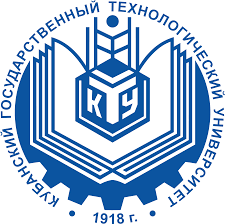
VII Съезд биофизиков России
Краснодар, Россия
17-23 апреля 2023 г.
17-23 апреля 2023 г.


|
VII Съезд биофизиков России
Краснодар, Россия
17-23 апреля 2023 г. |
 |
Программа СъездаСекции и тезисы:
Молекулярная биофизика. Структура и динамика биополимеров и биомакромолекулярных системХарактеристика свойств гемоглобина при глутатионилировании и образовании нековалентного комплекса с глутатиономЮ.Д. Кулешова1*, Ю.М. Полуэктов1, Д.Н. Калюжный1, П.И. Зарипов1, А.А. Макаров1, И.Ю. Петрушанко1 1.ФГБУН Институт молекулярной биологии им. В. А. Энгельгардта Российской академии наук; * julia_kul2000(at)mail.ru Гемоглобин является мажорным белком эритроцитов, основная функция которого заключается в снабжении тканей кислородом. В зависимости от условий гемоглобин может подвергаться различным пост-трансляционным модификациям. Одной из таких модификаций является глутатионилирование – присоединение трипептида глутатиона к тиоловой группе белка с образованием дисульфидной связи. Молекула гемоглобина содержит шесть остатков цистеина (β-Cys 112, β-Cys 93 и α–Cys 102). β-Cys 93 является основной мишенью для глутатионилирования. Глутатионилирование увеличивает сродство гемоглобина к кислороду [1], что может играть важную роль при адаптации эритроцитов к стрессовым условиям. Однако каким образом, глутатионилирование влияет на конформацию и свойства молекулы гемоглобина до настоящего времени не установлено. Кроме ковалентного связывания с гемоглобином внутриклеточный трипептид глутатион в восстановленной форме (GSH) способен образовывать нековалентный комплекс [2]. Как нами было показано, способность связывать GSH снижается при переходе от окси к дезоксиформе гемоглобина. Сродство оксиформы к GSH выше, и она способна связать четыре молекулы GSH, в то время как дезоксиформа только две [2]. Это приводит к росту уровня GSH в эритроцитах при значительной деоксигенации, что важно для адаптации клеток к гипоксии. Необходимо отметить, что образование нековалентного комплекса c GSH также приводит к возрастанию сродства к кислороду [2].
Для того, чтобы установить, как глутатионилирование и образование нековалентного комплекса с глутатионом влияют на свойства молекулы гемоглобина нами было охарактеризовано влияние данных факторов на изменение вторичной структуры гемоглобина, на гем и гемовое окружение, а также на окружение триптофанов. С этой целью были проанализированы спектры кругового дихроизма (КД) в ультафиолетовой области и в полосе Соре, а также спектры триптофановой флуоресценции. Было установлено, что глутатионилирование гемоглобина не приводит к изменению КД в полосе Соре, что свидетельствует об отсутствии изменений в геме и гемовом окружении белка. Спектр поглощения глутатионилированного гемоглобина также не изменяется. При этом методом кругового дихроизма при помощи программы CDNN [3] были выявлены изменения во вторичной структуре гемоглобина при глутатионилировании. В частности, глутатионилирование снижает процент альфа спиральности на 10 процентов. Это свидетельствует о том, что глутатионилирование делает вторичную структуру белка менее упорядоченной. Однако третичная структура белка не претерпевает значительных изменений. Так, температура плавления белка после глутатионилирования не меняется, то есть на термостабильность белка данная модификация не влияет. Глутатионилирвоание не влияет на спектр триптофановой флуоресценции, что демонстрирует отсутствие изменений в триптофановом окружении при глутатионилировании гемоглобина. Используя моделирование in-silico, мы обнаружили, что глутатионилирование β-Cys93 и β-112 пространственно не влияет на остатки Trp. Минимизация глутатионилированной структуры (по остаткам β-Cys93 и β-112) в силовом поле AMBER99 также не выявила каких-либо существенных изменений в позиционировании Trp. При образовании нековалентного комплекса глутатиона с гемоглобином, напротив, во вторичной структуре белка не наблюдается значимых изменений, в то время как третичная структура меняется. Образование нековалентного компелкса приводит к сдвигу пика КД в полосе Соре в более коротковолную область, его амплитуда уменьшается и сам он уширяется. В спектре поглощения в полосе Соре наблюдаются аналогичные изменения. Таким образом, мы можем говорить об изменениях в геме/гемовом окружении при образовании нековалентного комплекса. Кроме того, образование нековалентного комплекса приводит к изменению спектра триптофановой флуоресценции – наблюдается увеличение амплитуды сигнала. Собственная флуоресценция гемоглобина обусловлена в основном присутствием остатков Trp в полипептидной цепи. Тетрамер гемоглобина содержит шесть остатков Trp, причем остаток β-Trp 37, расположенный на поверхности α1β2, считается основным аминокислотным остатком, вносящим вклад в собственную флуоресценцию Hb [4]. Моделирование in-silico показало, что β-Trp37 расположен на поверхности внутренней полости молекулы гемоглобина и участвует во взаимодействии с GSH, два других остатка Trp расположены над поверхностью и не взаимодействуют с молекулами GSH. Полученные данные свидетельствуют о том, что при образовании нековалентного комплекса Hb c GSH происходят изменения в триптофановом окружении вблизи участка связывания GSH. Кроме того, об изменении третичной структуры белка свидетельствует также снижение температуры плавления гемоглобина. То есть термостабильность гемоглобина в комплексе с GSH стала ниже. Молекулярное моделирование (минимизация структуры в силовом поле AMBER99 после докинга GSH с гемоглобином) показало некоторые структурные изменения β-Trp37 и ближайших остатков, которые участвуют во взаимодействии с GSH. Также мы показали, что расположение остатков Trp не имеет существенных отличий для разных конформаций гемоглобина. Таким образом, глутатионилирование несколько снижает альфа-спиральность гемоглобина, но практически не влияет на его третичную структуру, в то время как образование нековалентного комплекса не влияет на вторичную структуру белка, но изменяет окружение гема и окружение триптофанов, а также снижает термостабильность белка. Работа выполнена при финансовой поддержке Российского научного фонда (проект №19-14-00374) [1] Metere A. et al. Carbon monoxide signaling in human red blood cells: evidence for pentose phosphate pathway activation and protein deglutathionylation //Antioxidants & redox signaling. – 2014. – Т. 20. – №. 3. – С. 403-416. [2] Fenk S. et al. Hemoglobin is an oxygen-dependent glutathione buffer adapting the intracellular reduced glutathione levels to oxygen availability //Redox Biology. – 2022. – Т. 58. – С. 102535. [3] Böhm G., Muhr R., Jaenicke R. Quantitative analysis of protein far UV circular dichroism spectra by neural networks //Protein Engineering, Design and Selection. – 1992. – Т. 5. – №. 3. – С. 191-195. [4] Quds R. et al. Interaction of mancozeb with human hemoglobin: Spectroscopic, molecular docking and molecular dynamic simulation studies //Spectrochimica Acta Part A: Molecular and Biomolecular Spectroscopy. – 2022. – Т. 280. – С. 121503. Characteristics of hemoglobin after glutathionylation and formation of a non-covalent complex with glutathioneIu.D. Kuleshova1*, Yu.M. Poluektov1, D.N. Kalyuzhny1, P.I. Zaripov1, A.A. Makarov1, I.Yu. Petrushanko1 1.Engelhardt Institute of Molecular Biology, Russian Academy of Science, Moscow, Russian Federation; * julia_kul2000(at)mail.ru Hemoglobin is a major protein of erythrocytes. The main function of hemoglobin is to supply oxygen to tissues. Hemoglobin can undergo various post-translational modifications depending on different conditions. One of these modifications is glutathionylation. This is the addition of a glutathione to the thiol group of a protein with the formation of a disulfide bond. The hemoglobin contains six cysteine residues (β-Cys 112, β-Cys 93 and α–Cys 102). β-Cys 93 is the main target for glutathionylation. Glutathionylation increases the affinity of hemoglobin to oxygen [1]. This can play an important role in the adaptation of erythrocytes to stressful conditions. However, it has not been established yet how glutathionylation affects the conformation of the hemoglobin.
Besides covalent binding to hemoglobin, the intracellular glutathione in reduced state (GSH) forms a non-covalent complex with hemoglobin [2]. As we have shown, the ability of binding GSH decreases during the transition from the oxy to the deoxyform of hemoglobin. The affinity of the oxyform to GSH is higher, so hemoglobin binds four GSH molecules, while the deoxyform is only two. This leads to an increase in the GSH level in erythrocytes under significant deoxygenation [2]. This is important for the adaptation of cells to hypoxia. It should be mentioned that the formation of a non-covalent complex with GSH also leads to an increase in affinity for oxygen [2]. To establish how glutathionylation and the formation of a non-covalent complex with glutathione affect the conformation of the hemoglobin molecule, we characterized the influence of these modifications on the secondary structure of hemoglobin, on the heme and heme environment and on the environment of tryptophans. For this purpose, we analyzed the circular dichroism (CD) spectra in the ultraviolet region and in the Soret band and tryptophan fluorescence spectra. We found that glutathionylation of hemoglobin does not lead to alterations in CD in the Soret band, which indicates that there are no changes in the heme and heme environment of the protein. The absorption spectrum of glutathionylated hemoglobin also does not change. At the same time, the CDNN program [3] for analysis the circular dichroism spectra revealed differences in the secondary structure of hemoglobin due to glutathionylation. In particular, glutathionylation reduces the percentage of alpha helix by 10 percent. This indicates that glutathionylation makes the secondary structure of the protein less ordered. However, the tertiary structure of the protein does not change significantly. Thus, the melting point of the protein after glutathionylation does not change. It means that this modification does not affect the thermal stability of the protein. Glutathionylation does not affect the tryptophan fluorescence spectrum, which demonstrates the absence of changes in the tryptophan environment in the glutathionylated hemoglobin. Using in-silico modeling, we found that glutathionylation of β-Cys93 and β-112 does not spatially interfere with Trp residues. Minimization of the glutathionylated structure (by β-Cys93 and β-112) in the AMBER99 forcefield also does not revealed any significant changes in Trp positioning. The formation of a non-covalent complex of glutathione with hemoglobin, on the contrary, does not lead to any significant changes in the secondary structure of the protein, while the tertiary structure changes. The formation of a non-covalent complex leads to a shift of the СD of Soret peak to a shorter wavelength region, its amplitude decreases and peak broadened. Similar changes were observed in the absorption spectrum of the Sore band. Thus, we can suggest changes in the heme and heme environment during the formation of a non-covalent complex. At the same time, the formation of a non–covalent complex leads to a change in the tryptophan fluorescence spectrum – the signal amplitude increased. The intrinsic fluorescence of hemoglobin is mainly due to the presence of Trp residues in the polypeptide chain. The hemoglobin tetramer contains six Trp residues. The β-Trp 37 residue locates on the surface of α1β2. It is considered to be the main amino acid residue contributing to the intrinsic fluorescence of Hb [4]. In addition, a decrease in the melting point of hemoglobin also indicates an alteration in the tertiary structure of the protein. In-silico modelling revealed that β-Trp37 is located on the surface of the inner cavity of hemoglobin molecule and is involved in the interaction with the GSH, two other Trp residues are located superfacially and does not interact with GSH molecules. Our data reveal that tryptophan environment near GSH binding site changed after the formation of a non-covalent complex Hb with GSH. In addition, a decrease in the melting point of hemoglobin also indicates a change in the tertiary structure of the protein. It means that thermal stability of hemoglobin in complex with GSH has become lower. Crude molecular modelling (structure minimization in AMBER99 forcefield after GSH-hemoglobin docking) showed some structural changes of the β-Trp37 and nearest residues, which are involved in the interaction with GSH. Also, we have found that the positioning of Trp residues does not differ significantly between the different hemoglobin conformations. Thus, glutathionylation reduces the alpha helix percentage of hemoglobin, but practically does not affect its tertiary structure, while the formation of a non-covalent complex does not affect the secondary structure of the protein, but affects the heme environment and the environment of tryptophans, and also reduces the thermal stability of the protein. This work was supported by the Russian Science Foundation, grant #19-14-00374. [1] Metere A. et al. Carbon monoxide signaling in human red blood cells: evidence for pentose phosphate pathway activation and protein deglutathionylation //Antioxidants & redox signaling. – 2014. – Т. 20. – №. 3. – С. 403-416. [2] Fenk S. et al. Hemoglobin is an oxygen-dependent glutathione buffer adapting the intracellular reduced glutathione levels to oxygen availability //Redox Biology. – 2022. – Т. 58. – С. 102535. [3] Böhm G., Muhr R., Jaenicke R. Quantitative analysis of protein far UV circular dichroism spectra by neural networks //Protein Engineering, Design and Selection. – 1992. – Т. 5. – №. 3. – С. 191-195. [4] Quds R. et al. Interaction of mancozeb with human hemoglobin: Spectroscopic, molecular docking and molecular dynamic simulation studies //Spectrochimica Acta Part A: Molecular and Biomolecular Spectroscopy. – 2022. – Т. 280. – С. 121503. Докладчик: Кулешова Ю.Д. 63 2023-02-15
|